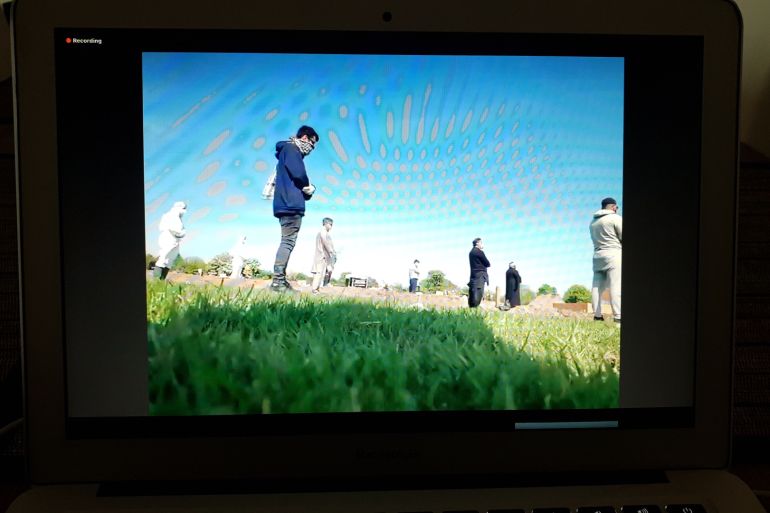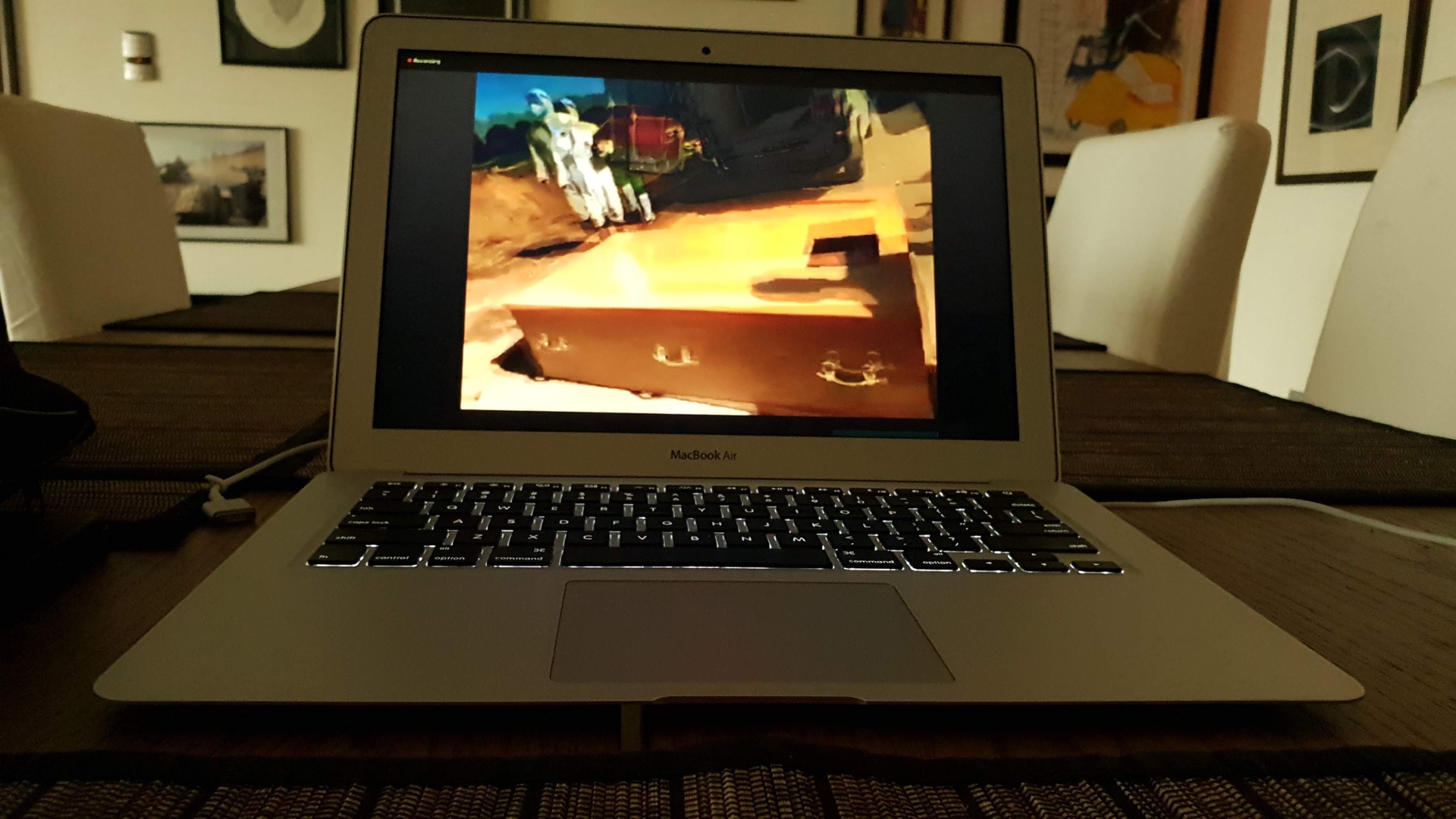Death at a distance: Zoom funerals in the time of coronavirus
Due to COVID-19 restrictions, social media and videoconferencing apps are the only ways people can connect and mourn.

They stood distanced from each other, two metres apart. The seven of them held their hands open, palms facing upwards in Muslim prayer, as they prepared to lay Sajid in his final resting place.
On other ends of the internet, some 80 of us watched via the videoconferencing app Zoom.
Keep reading
list of 4 itemsWill the US unemployment rate continue at historic lows?
Mexico’s teachers seek relief from pandemic-era spike in school robberies
‘A bad chapter’: Tracing the origins of Ecuador’s rise in gang violence
Sajid, my cousin, died after a long battle with cancer. He lived longer than the doctors had predicted, fighting it as hard as he could. Those of us fortunate to know him remember him as a larger-than-life character and a happy, jolly fellow from Manchester, England.
When I heard the news I instinctively reached for my phone to book a flight to the United Kingdom from Qatar, where I live. But as soon as I opened the flight booking app I realised I could not travel because of COVID-19 restrictions.
I spoke to my parents in the UK who were also upset that they could not make the journey north to say goodbye.
On my phone I got a notification. I had been added to a WhatsApp instant messaging group designed to keep us all updated on the funeral arrangements. A WhatsApp group; a place normally reserved for the trivial, for the daily flotsam of communication between family, friends and colleagues.
A few hours later, a Zoom link was posted in the group. Six weeks ago I had never even heard of this app, and now it was embedding itself in this personal and intimate moment of grief.
This link, an impersonal piece of code made up of a seemingly random list of numbers, is now the way we mourn.
The Zoom link does not care if we use it for a business meeting, to share recipes, or to catch up with friends. It is a piece of code. Sajid, a techie to the end, would have smiled at the thought of his funeral taking place on an app.
I was upset, though. I would not be there in person to observe custom and throw three fistfuls of dirt over the coffin and say a last goodbye. If I felt this, then how would his immediate family feel? His other friends and cousins?

At the appointed time, I switched on the link. Up popped people from all over the world. The United States, Pakistan, England, the Middle East. It was quite something to watch. Some 80 people gathered together in digital solace to watch those few who were physically present do what we would have liked to do in person.
As the proceedings unfolded, we watched and prayers were given. We did not talk to each other out loud. We watched in silence as we would do if we there physically. People left text messages of condolences in the message section of the app, a section that became the de facto book of condolences.
As I watched all this occur, I became less upset and more grateful that I was at least able to witness and take part in this outpouring of grief digitally.
I would never have thought I would take part in a funeral for someone via an app. It is the kind of thing you would expect to read about in a dystopian novel far removed from your own reality.
But perhaps we are all living a dystopian reality. One that stops us from having the one thing that technology will never replace: the embrace of family in a time of grief; the ability to sit and share memories together in person.
Human contact is the one thing that will always define our humanity.
As the funeral finished, I said a prayer and with it the words “From God we come, to God we return”.
The screen went blank and I was left alone in my apartment, thousands of miles away. One of the many across the globe who has lost a loved one and, because of the restrictions, has been denied mourning in person.
Technology had allowed me to say goodbye. But not in the way we should say goodbye.